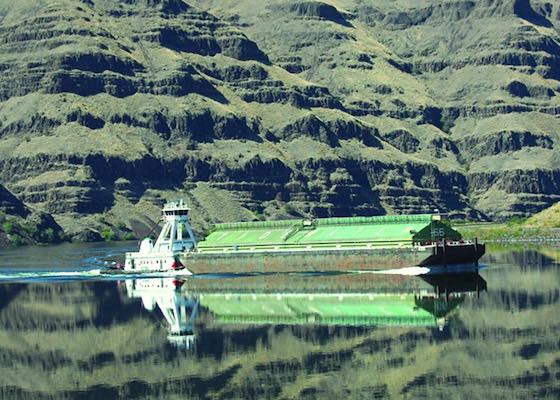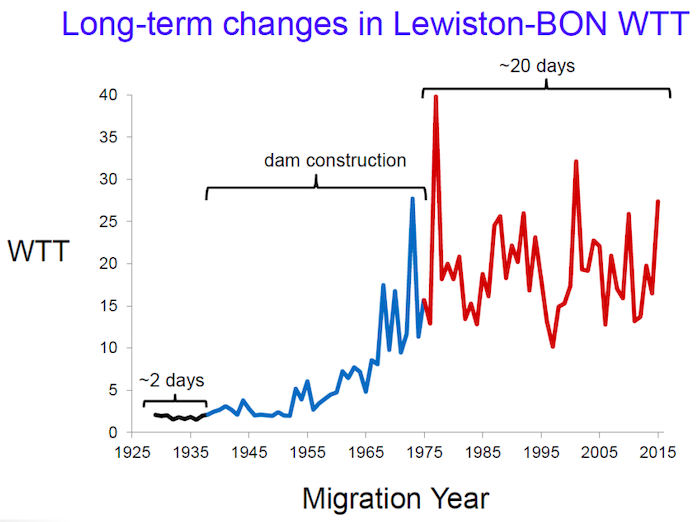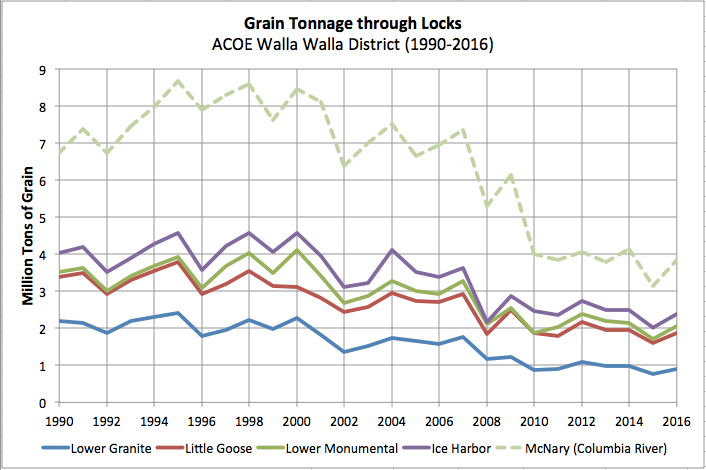forum
library
tutorial
contact

'The Most Complex
Natural Resource Issue In The West'
by Xavier Ward
Boise Weekly, July 24, 2019
|
the film forum library tutorial contact |

|
'The Most Complex
by Xavier Ward
|
"It has to involve dam removal," says Justing Hayes, director of Idaho Conservation League.
"People want, I believe, to restore wild abundant fish that are ecologically meaningful."
 Historically, millions of salmon would swim from the Pacific Ocean up the Columbia and Lower Snake rivers to ancestral spawning grounds in Idaho. After birthing smolts that would keep the salmon population healthy, the current would push the fish back to the ocean and the process would repeat. It's a natural cycle that happens less every year. Now a few thousand salmon swim to spawn in the cold mountain waters of central Idaho's Clearwater basin.
Historically, millions of salmon would swim from the Pacific Ocean up the Columbia and Lower Snake rivers to ancestral spawning grounds in Idaho. After birthing smolts that would keep the salmon population healthy, the current would push the fish back to the ocean and the process would repeat. It's a natural cycle that happens less every year. Now a few thousand salmon swim to spawn in the cold mountain waters of central Idaho's Clearwater basin.
"Idahoans have done a lot to protect this habitat for salmon and steelhead," said Justin Hayes, director of the Idaho Conservation League. "It's worth pointing out that much."
The decline in salmon is a complex issue. The euryhaline breed of fish prefers cold water, and rising ocean temperatures pose a problem. However, the sticking point for those trying to save wild salmon in Idaho are the hydropower dams on the Lower Snake and Columbia rivers.
Conservationists have tried for years to breach the federally owned dams to no avail. It's not just power officials who want the dams in place, but also grain shippers who use barges to transport crops down the river from Lewiston, the furthest inland seaport in the lower 48.
To Hayes' mind, the solution to increasing the population of wild salmon in Idaho is by no means simple, but if it doesn't involve breaching four dams on the Lower Snake River, it's not tenable. "It has to involve dam removal," he said. "People want, I believe, to restore wild abundant fish that are ecologically meaningful."
There have been efforts to circumvent dam removal. All dams have a fish ladder, which allows the salmon to swim up and around, but that's hardly intuitive after thousands of years of travelling directly up the river to home spawning grounds, Hayes said.
For the journey down, the least-fatal way for the salmon to get past the dam is actually spilling over into the river below. Some even survive being sucked into the hydropower turbine and spat out the other side, he said, but each year, fewer fish make the journey home.
 Hayes said environmental scientists have pinpointed the number of dams that need to be removed. If four of the eight dams on the Lower Snake and Columbia rivers are taken out, salmon should be able return in numbers that will enable a slow recovery.
Hayes said environmental scientists have pinpointed the number of dams that need to be removed. If four of the eight dams on the Lower Snake and Columbia rivers are taken out, salmon should be able return in numbers that will enable a slow recovery.
Dams slow the pace of the river, allowing the water to heat up in the reservoirs created along the river, creating less-than-ideal conditions for salmon smolts. This has also allowed predatory fish species like pike and largemouth bass to gobble small salmon along the way.
One of the bigger problems, however, is the amount of time it takes to get to the ocean. Before the dams, salmon could reach the ocean in roughly two weeks. Now, with all the blockages, it can take up to two months. All the while, a metamorphosis of these fish is taking place: going from freshwater to saltwater fish.
"It's akin to saying you went from breathing air to breathing water, it's an amazing physiological change they undertake," Hayes said.
 While conservationists say dam removal is the issue, some depend on the dams for business purposes. Jeff Sayre, spokesman for CHS Primeland, a grain-shipper based in Craigmont, said the dams keep rivers at a level that allow shippers to haul wheat down the river to Portland, Oregon, where it is shipped all over the world. Without those dams on the river, the river levels would drop to a point where barges could no longer use the river for passage.
While conservationists say dam removal is the issue, some depend on the dams for business purposes. Jeff Sayre, spokesman for CHS Primeland, a grain-shipper based in Craigmont, said the dams keep rivers at a level that allow shippers to haul wheat down the river to Portland, Oregon, where it is shipped all over the world. Without those dams on the river, the river levels would drop to a point where barges could no longer use the river for passage.
"You just drop it off at Lewiston and down the river it goes," Sayre said.
The river acts as one of the largest thoroughfares for grain shippers in the country. All told, 10% of all U.S. wheat is shipped down the Columbia River, he said.
Each bushel of wheat sells for roughly $6, and each year anywhere between 20 and 25 million bushels are shipped on the river, making the economic impact of the dams significant. Grain isn't an afterthought for these small communities, it is the only economic driver, Sayre said. Conservationists have pushed for alternative forms of shipping, but Sayre said nothing is as cost-effective or efficient as shipping on river barges.
Carrying one ton of cargo, a barge travels 573 miles using the same amount of fuel as a semi tractor trailer would in 155 miles and a train would in 413 miles. There is some rail infrastructure in the area, but it's outdated and hasn't been used for years, he said. It would require a significant investment and expansion of the existing lines. Even then, rail lines can't ship as much wheat as a river barge.
"It gets very complicated on the alternative transportation systems," he said. "The rail doesn't go anywhere from here like it used to go."
While it seems the sides are diametrically opposed, Sayre said he has never met a farmer who wants wild salmon to go extinct in Idaho. But for them, the river is helping to keep farmers afloat.
"It's a complicated web of ideas," Sayre said. "I don't think there's any silver bullet for getting these fish back."
Sayre also questioned whether the dams are really to blame. Recently, sewage spills in the Puget Sound have toxified salmon habitat, and climate change has raised ocean temperatures, potentially causing fish death. As the conversation of how to save Idaho salmon moves forward, Sayre and his cohorts are ready to come to the table and look for a solution.
"It's a complicated web and hopefully we can figure out some common ground," Sayre said.
Related Pages:
Study: Breaching Dams Would Pay Off by Eric Barker, Lewiston Tribune, 7/31/19
Bonneville Power Administration Faces Promise and Perils in Changing Energy Markets by Hal Bernton, Seattle Times, 7/21/19
learn more on topics covered in the film
see the video
read the script
learn the songs
discussion forum
